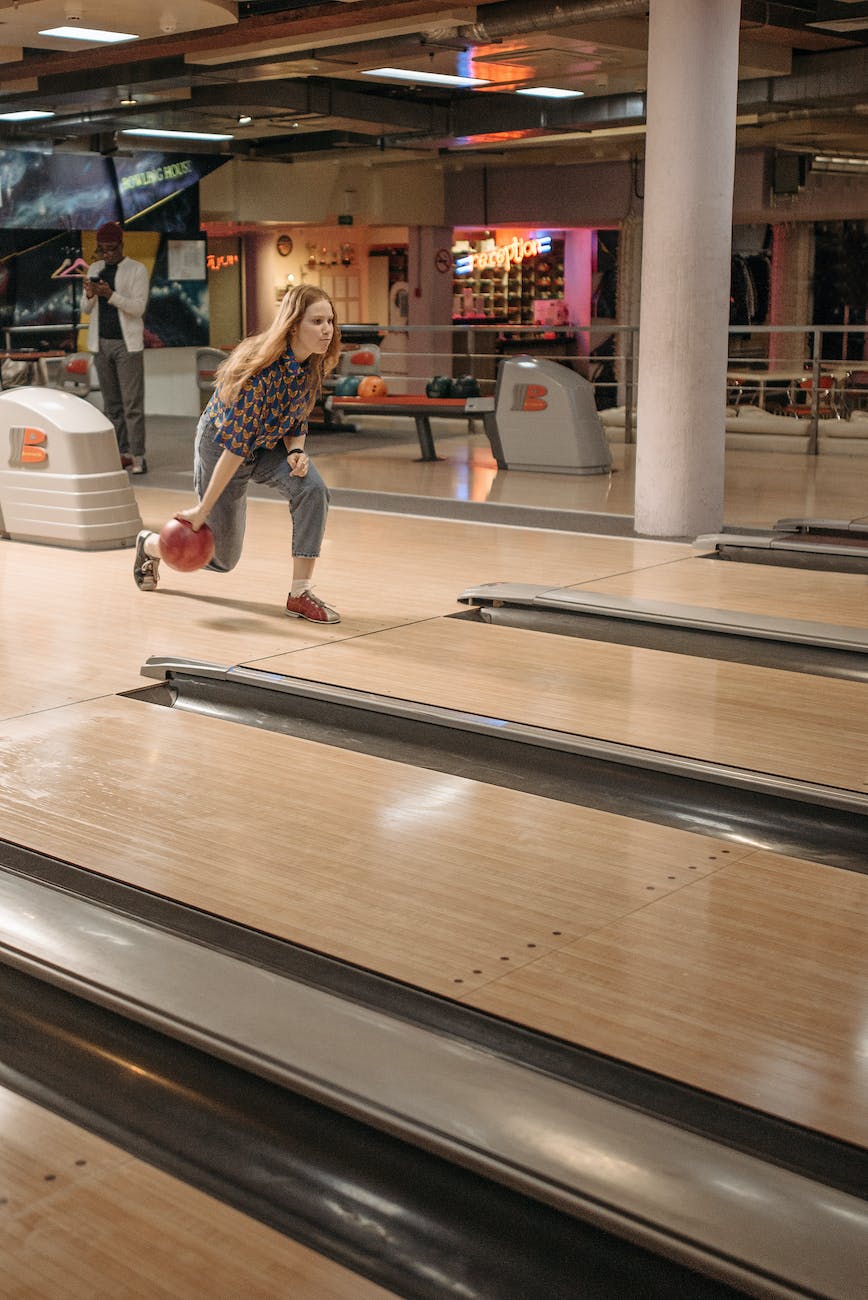The Significance of the Figure-Eight Swing
Why is the figure-eight swing so important in bowling? Among those who enjoy bowling naturally, it’s rare to see someone with a perfect straight swing. Most prefer the figure-eight swing, which is due to a small, less noticeable tweak.
For individuals with more fat or developed latissimus dorsi muscles, the swing and personal number tend to spread out, necessitating a figure-eight swing. If the personal number is large, it becomes difficult to transmit power, and pulling the swing reduces control. Here, the figure-eight swing can help address these issues.
For people with larger bodies, the arm tends to spread out during a swing. When that happens, the arm that went outwards will come back in. If you modify the swing to a figure-eight, you can send the arm that went outside back out from the inside. If you have a large side or large personal number, expanding the figure-eight swing can help solve two problems at once.
Controlling the Figure-Eight Swing
When the arm that went outwards during a backswing slightly turns back inwards, beginners can practice a figure-eight swing the size of a basketball or soccer ball. As the gap decreases, power transmission improves and the swing becomes more natural. It’s ideal to reduce the figure-eight gap to the size of a tennis ball, but that indicates good physical condition.
The size of the figure-eight is determined by the direction of the push. If you push with your arm inwards, your arm will go outwards during the backswing. A hand that came in cannot go out in a straight line because the right thigh blocks it.
To enlarge the figure-eight, move the ball towards the navel or the left hand. During the backswing, think of it as turning the arm half a circle from the back, and the figure-eight will be easily created. If you slightly turn your arm, it converts to inner energy, sticks to the body, and can be sent back out. As a result, you can strongly push the ball even if the lane is dry.
Maintaining the Figure-Eight Swing
Your arm should always be close to your armpit. Turning the arm increases the free-fall time. There’s no way to hold the ball with force during a backswing, so the free-fall time increases slightly when turning it down.
Even with a basic swing, creating a slight figure-eight can extend the free-fall time. It’s not necessary to force a figure-eight swing. A straight swing is more comfortable and increases control. The figure-eight is a technique determined by the situation. If possible, practicing the figure-eight swing can improve your physical condition.
One advantage of the figure-eight swing is that it improves adduction. As the arm that went outwards comes inwards, the rotation improves, increasing the angle of the bowling ball.
The size of the figure-eight does not need to be forced. By determining the size of the figure-eight based on the direction of the push from within, you can maintain control.
When practicing the figure-eight swing, if you try to move your shoulder sideways, the effect decreases. Try to think of turning your arm to make the swing smoother.
The swing should be best suited for the bowling ball. After accurately acquiring one swing, you can use various bowling balls. Not only the figure-eight swing, by adjusting the direction of the body and the length of the swing, you can enjoy bowling that varies with the lane.
Enhancing the Height of the Backswing
Raising the backswing is not particularly difficult. The height of the backswing is determined during the push and downswing. Raising the backswing with force leads to inconsistency and difficulty, so natural movement is more important than using force.
If you raise the backswing, the strength increases. However, an excessively high backswing can reduce control. Therefore, maintaining an appropriate height is crucial. Bending the upper body forwards naturally raises the backswing.
There’s also the method of moving the shoulder sideways. If you twist the upper body, you can raise the backswing, and when a large potential energy occurs from the push to the downswing, the backswing height increases. The height of the backswing is determined by the position where the ball is held, so you need to check your control and find the appropriate height.
Not only upper body strength but also lower body strength is important. If the balance of the two forces is off, control decreases. Therefore, when determining the height of the backswing, consider your control and balance.
